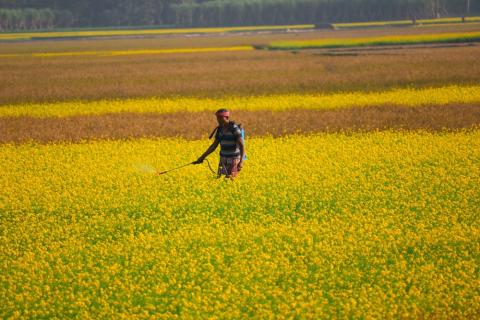Situation Report on Chlorpyrifos in India

Agriculture in India was traditionally non-mechanised and organic, that is, conducted without the use of chemical fertilizers and pesticides. These traditional practices persisted in most of India through the 1950s and for much of the 1960s, until the introduction of high yield varieties, popularly known as the Green Revolution. However, the introduction of high yield varieties resulted in the paramount increase in the use of chemical fertilizers and pesticides. The total pesticide consumption in India grew nearly tenfold in the two decades between 1958 and 1978.
As a result, India’s food grain production has more than quadrupled since its independence in 1947, leading to a substantial increase in available food grain per capita. India ranks second worldwide in agricultural production today. The agricultural sector is the largest employer of workforce in India and accounts for a sizable 18.8 per cent (2021- 22) in Gross Value Added (GVA) of the country. While this approach produced encouraging results in terms of overall food production, it ignored the problems associated with the widespread use of pesticides and their long-term effects.
Chlorpyrifos has been registered in India under the Insecticides Act since 1977. Additionally, seven formulations of chlorpyrifos have been registered for use under the Act. As of 2016-17, Chlorpyrifos is the most used pesticide in India accounting for 9.4% of the total insecticide consumption. The Central Insecticide Board and Registration Committee (CIB&RC) under the Directorate of Plant Protection, Quarantine & Storage (PPQS), Ministry of Agriculture & Farmers Welfare, Government of India recommends the agricultural use of chlorpyrifos for rice, beans, gram, sugarcane, cotton, groundnut, mustard, brinjal (eggplant), cabbage, onion, apple, ber (Indian jujube/Indian plum), citrus and tobacco.
This project relates to the Sustainable Development Goals 2,3,6, 8, 14 and 15.
Special thanks to IPEN's South Asia Regional Coordinator Tripti Arora and the Regional Hub, and lead organization developing this report, Toxics Link, for their important contributions to the development and finalization of the project.
| Attachment | Size |
|---|---|
| 936.21 KB |
